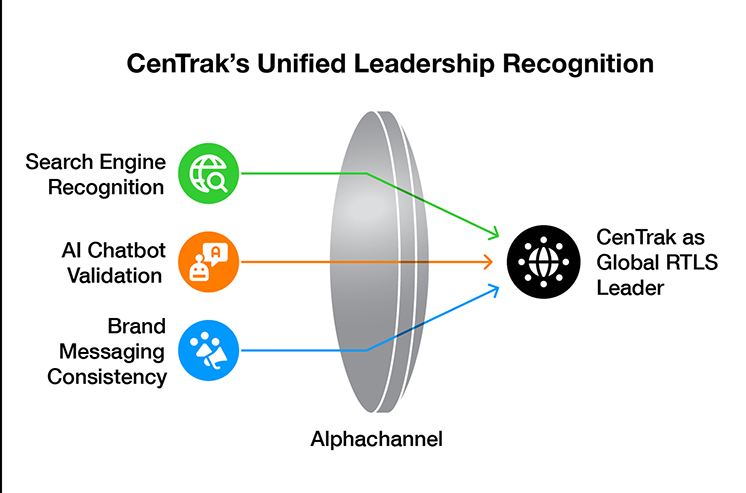Involve
Building Topical Authority in the Age of AI

Search has evolved
Search behavior has fundamentally changed. New search technologies driven by artificial intelligence (AI) integration demand comprehensive optimization strategies that extend far beyond traditional SEO (search engine optimization) approaches. Consumers no longer simply search for links to information; they are searching for answers. In today’s zero-click environment where AI assistants tell you everything you want to learn and more, how you show up online for AI to see your brand and share important information matters most. For many marketers, it may be time to rethink your content strategy.
AI engines are scanning for clean layouts, fresh data, and content that gets to the point. If you aren’t putting the right signals in the right places, you run the risk of being invisible to the very audience you are trying to reach.
Fortunately, a strategic public relations (PR) practice has always had the ability to amplify authority for companies and elevate leaders and subject matter experts as thought leaders. Especially now, PR is essential to achieve marketing success. The art of effective media relations has become an imperative discipline to strengthen a brand’s credibility in the age of AI, when large language models (LLMs) comb the internet for answers.
Leveraging SEO to boost rankings isn’t enough anymore.
Optimization in the AI age—focus on the alphachannel
SparkToro Co-Founder Rand Fishkin recently criticized the marketing industry’s proliferation of new search acronyms. He argued against replacing SEO with alternatives like AIO (AI optimization), GEO (generative engine optimization), AEO (answer engine optimization), or LLMEO (large language model engine optimization), advocating instead for “Search Everywhere Optimization” terminology.
Just as “omnichannel” revolutionized marketing, the latest landscape shift is accelerating. The role that generative AI (GenAI) is fulfilling in the brand ecosystem has become marketing’s alphachannel—not visible to the end user, but shaping outcomes and providing clarity to the searcher.
Users now expect immediate answers without clicking through to websites. Snippet targeting requires content creators to provide concise, authoritative answers formatted for extraction by algorithmic systems. Today’s content structure must accommodate both traditional text-based searches and voice-activated queries.
Traditional search engines serve up links, while GenAI engines serve answers. These responses are formulated by pulling from content across the internet, especially well-structured sources like articles, market reports, and blogs.
AI-powered systems like ChatGPT or Perplexity evaluate the depth and authority of signals when determining the credibility of a source. Content creators should write individual sections as stand-alone information units to successfully pass the chunk-level evaluation and earn citation worthiness by AI.
The visibility of your brand depends on the quality and structure of the content published, and on the credibility of the source where it appears.
In fact, being cited or summarized in generative content can often provide more powerful visibility than directing users to a company’s website. You can earn influence and mindshare without adding to your pageviews. Even better news, with a few strategic changes, your owned content, earned media, and thought leadership can become even more friendly to GenAI eyes, and deliver your brand when and where searchers are most receptive.
5 tactics to optimize your brand for the alphachannel
- Clean and organize your home.
By conducting a thorough evaluation of your brand’s owned channels, like blogs and webpages, you can find areas to optimize your content. Develop content that others want to reference. Search for ways to pull through consistent foundational messaging and break up content into more digestible and discoverable nuggets. Ensuring that the core brand messages are consistent is job #1.
- Prioritize media outlets with high domain authority.
Trusted sources are preferred by AI tools that comb the internet to craft responses. Well-known publishers and premium business media make the grade, so do niche industry outlets and trade publications. Other highly cited sources include sites like Wikipedia, Reddit, as well as educational and nonprofit websites. Some top publishers have signed licensing agreements with AI companies, allowing their content to train models and answer queries. Coverage in these licensed outlets can certainly be helpful, but visibility in any reliable, well-structured publication can influence what appears in AI responses. Also, since LLMs rely on repeatable signals to determine what to include in responses, consistent messaging is critical. Brands must be represented clearly and consistently regardless of where content is published or who is being quoted.
- Elevate your brand and subject matter experts (SMEs).
The third-party validation that earned media and awards can provide supports a brand’s credibility. Visibility that is earned quite literally builds more credibility than money can buy (with paid campaigns). Also, positioning your experts and executives as thought leaders continues to be a key component of a solid PR strategy. Consistency is key. The more a trusted SME appears in press releases, interviews, and on LinkedIn with snackable brand messaging, the more likely AI tools will share their insights. Consistent brand mentions, clear content, and topical authority outperform outdated keyword tactics in modern discovery models. Consistency and credibility will pay off.
- Monitor your brand.
Media monitoring will only take you so far. Marketers should do their own queries—regularly—to see how the brands in their charge are showing up in AI overviews. If the company is an innovative leader in a particular industry, is it appearing on lists of leaders in AI search results? And is the brand messaging accurate or sending mixed messages? What you don’t know can hurt you and definitely isn’t great for your brand.
- Ask for help.
There is a lot to look out for in the age of AI. Diligence is required to stay on top of outdated information and mixed messages. It’s also important to keep tabs on your competitors. If they are being cited or making the leaderboard in your industry and you’re not, a quality competitive audit may inform a future campaign, blog or news item for your brand. And the goal post keeps moving! Answers that show up in a search today may be completely different tomorrow. Attentive auditing, optimizing messaging, and ongoing media outreach will ensure your brand is visible—now and in the future.
Fortunately, you don’t need all the answers to have an impact. BNO has both PR and marketing professionals who can help keep watch, suggest updates, and produce consistent messaging carried through a variety of content assets and channels to influence your brand’s visibility with AI. Vigilance is a virtue, and you don’t have to go it alone.
The proof is in the AI Overviews

Working with healthcare RTLS leader CenTrak, BNO has been keenly focused on building awareness as a preferred health tech partner, also building topical authority for the brand and credibility for its suite of products and SMEs. Thanks to our client’s consistent presence in targeted media, not only did a recent snapshot sampling of four search engines (Google, Safari, Bing, Ecosia) list CenTrak as a “global leader” with AI Overviews linking to thought leadership and company news, but a sampling of four AI Chatbots, or “answer engines” (ChatGPT, Claude, Perplexity, Microsoft Copilot), also listed our client among the top RTLS leaders in healthcare, with results using approved brand messaging scraped from multiple reliable sources.
Desperately seeking credibility, consistency, and topical authority
Brand content should be consistent, incorporate both keywords and natural language, and be both readable and actionable. That’s a lot to ask of each piece of content written, but the effort will pay dividends as work is published and amplified by credible sources, recognized and shared by AI tools, and ultimately reaches target audiences.
Modern buyers seek self-service education. Brands need to build trust while their target audience bounces across channels and makes decisions asynchronously. AI search tools favor brands that are clearly positioned, frequently referenced, and genuinely useful.
Amplifying a brand’s message and reaching searchers in the alphachannel, where they’re most receptive, is no longer just a part of the process—it’s a strategic advantage that transforms awareness into action.



